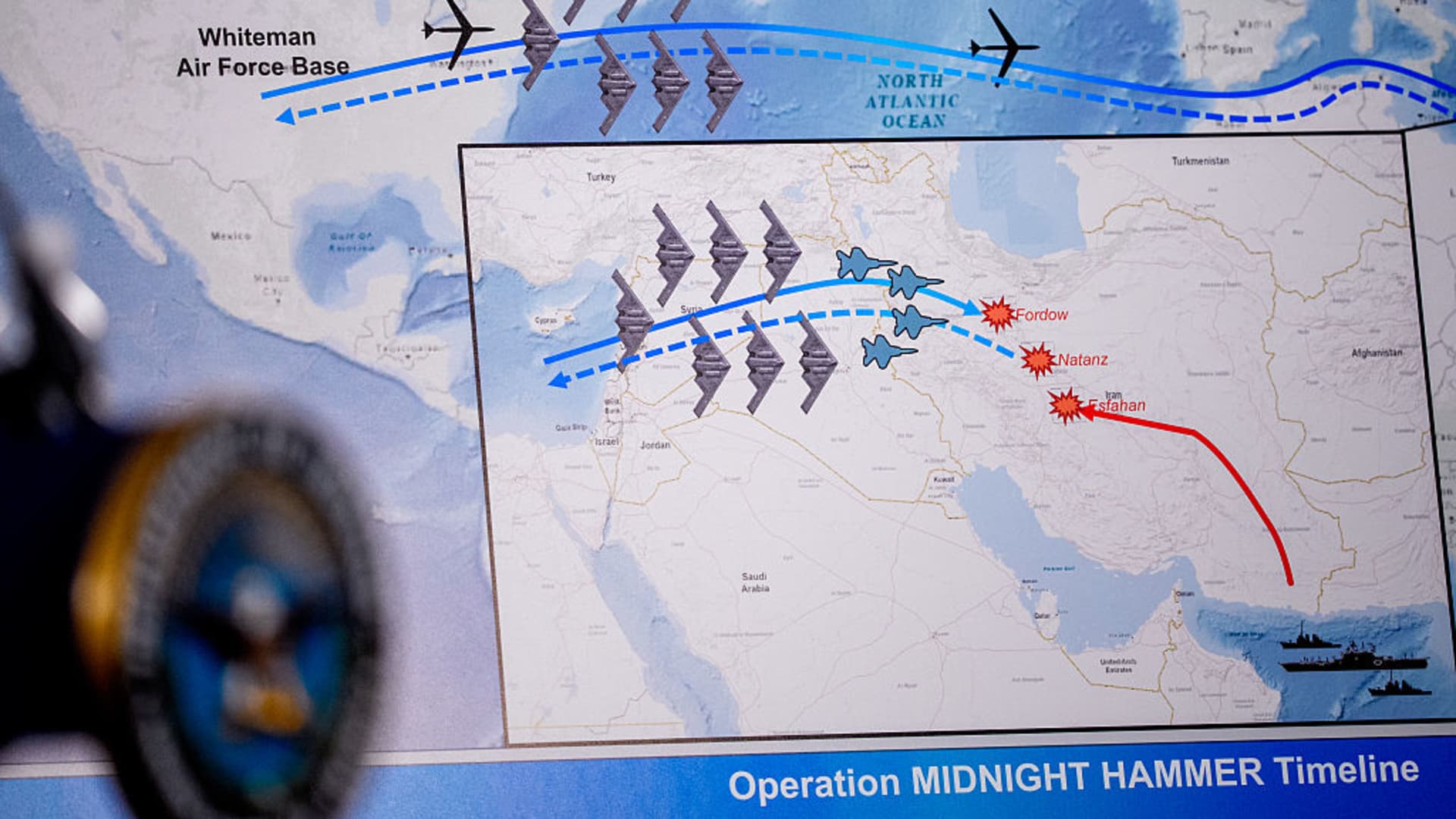
How the Israel-Iran standoff took a turn and what’s next after a pivotal 24 hours
How did your country report this? Share your view in the comments.
Diverging Reports Breakdown
How the Israel-Iran standoff took a turn and what’s next after a pivotal 24 hours
The past 24 hours have been pivotal in the Israel-Iran conflict, with the U.S. entering the war. On Saturday night, American B-2 Spirit stealth bombers and submarines struck three of Iran’s most critical nuclear sites. Iran’s parliament has also voted to close the critical Strait of Hormuz, endangering energy supplies. Oil prices jumped more than 2% on Sunday evening, and continued to rise to just under $80 per barrel for Brent crude, and under $75 for West Texas Intermediate crude. The Strait currently remains open, but analysts have told CNBC that oil prices could test $100 a barrel if Iran closes the Strait and Western forces try to reopen it by force.
The past 24 hours have been pivotal in the Israel-Iran conflict, with the U.S. entering the war — a move that has left investors and world leaders on edge. On Saturday night, American B-2 Spirit stealth bombers and submarines struck three of Iran’s most critical nuclear sites: Fordo, Natanz, and Isfahan. The strikes represented the first direct action that the U.S. had taken against Iran since the country was hit by Israeli attacks earlier in June. Israel and Iran had been trading strikes since Israel preemptively attacked it on June 13, killing key Iranian military figures and nuclear scientists. Since then, the world has seen reactions from around the globe over the strikes, including from Iran itself, which has called the strikes “outrageous” and vowed “everlasting consequences”. Iran’s parliament has also voted to close the critical Strait of Hormuz, endangering energy supplies. Here’s a roundup of the events since the U.S. attacks happened, and what could happen next.
U.S. enters Israel-Iran war
Oil rises on Hormuz closure news
Oil prices jumped more than 2% on Sunday evening, and continued to rise to just under $80 per barrel for Brent crude, and just under $75 for West Texas Intermediate crude.
Stock Chart Icon Stock chart icon
The rise comes after Iran’s parliament backed closing the critical Strait of Hormuz, where about 20% of the world’s oil transits. The U.S. Energy Information Administration has described it as the “world’s most important oil transit chokepoint.” However, the final decision to close the Strait lies with Iran’s national security council, according to the report. The Strait currently remains open, but analysts have told CNBC that oil prices could test $100 a barrel if Iran closes the Strait and Western forces try to reopen it by force.
Stock Chart Icon Stock chart icon
U.S. Secretary of State Marco Rubio on Sunday had also called for China to prevent Iran from closing the Strait. China is Iran’s largest oil customer, accounting for the bulk of Iranian oil exports, and maintains friendly relations with the country.
Bracing for Iran’s response
